Welcome to the fascinating world of personalities! Have you ever wondered why some people are outgoing and spontaneous, while others are reserved and analytical? Or perhaps you’ve pondered why certain individuals thrive in social settings, while others find solace in solitude. If these questions resonate with you, then you’re in the right place. In this comprehensive guide, we will embark on a journey to decode the intricacies of different personality types.
From the extroverted and adventurous souls to the introverted and introspective minds, we will delve deep into the unique traits, motivations, and behaviors that shape who we are. Through a blend of psychological theories, real-life examples, and practical tips, we will equip you with the knowledge and understanding to navigate the diverse world of personalities. So, get ready to unlock the secrets of your own personality and gain insights into the people around you. Whether you’re a curious individual seeking self-discovery or a professional looking to enhance your interpersonal skills, this guide has something for everyone. Let’s dive in and unravel the mysteries of personality together!
The History of Personality Psychology
Personality psychology is a field that has captivated the minds of scholars and researchers for centuries. Understanding the complexities of human behavior and personality has been a quest that dates back to ancient civilizations. From the Greek philosophers’ theories on the four humors to Carl Jung’s groundbreaking work on the collective unconscious, the study of personality has evolved over time.
Theories such as Freud’s psychoanalysis and Maslow’s hierarchy of needs have contributed to our understanding of how personality develops and influences our thoughts, feelings, and actions. By examining the historical roots of personality psychology, we gain valuable insights into the foundations of the field and the progression of our understanding.
The Importance of Understanding Personality Types
Why is it important to understand different personality types? The answer lies in the power of self-awareness and interpersonal dynamics. When we have a deeper understanding of our own personality traits and tendencies, we can make informed decisions about our career paths, relationships, and personal growth.
Additionally, by recognizing and appreciating the diversity of personality types, we can build stronger connections with others and create more harmonious environments. By fostering empathy and understanding, we can navigate conflicts more effectively and enhance our communication skills. Understanding personality types is not about labeling or categorizing individuals, but rather about embracing the unique qualities that make each person who they are.
The Myers-Briggs Type Indicator (MBTI)
One of the most well-known and widely used personality typing systems is the Myers-Briggs Type Indicator (MBTI). Developed by Katherine Briggs and her daughter Isabel Briggs Myers, the MBTI is based on the theories of Carl Jung and provides a framework for understanding personality differences.
The MBTI categorizes individuals into sixteen different personality types based on four dichotomies: extraversion (E) vs. introversion (I), sensing (S) vs. intuition (N), thinking (T) vs. feeling (F), and judging (J) vs. perceiving (P). Each personality type is a unique combination of these four preferences, offering insights into how individuals perceive and interact with the world around them. Understanding the MBTI can be a valuable tool for self-discovery and personal growth.
The Five-Factor Model of Personality
In addition to the MBTI, another widely recognized personality framework is the Five-Factor Model (FFM) of personality. Also known as the Big Five, this model categorizes personality traits into five dimensions: openness to experience, conscientiousness, extraversion, agreeableness, and neuroticism. These dimensions provide a comprehensive overview of an individual’s personality and can be used to predict behavior and preferences.
By understanding where individuals fall on each dimension, we can gain insights into their motivations, values, and interpersonal style. The Five-Factor Model is often used in academic research, organizational psychology, and even dating apps to help individuals understand themselves and connect with others more effectively.
Understanding Extroversion and Introversion
One of the most fundamental aspects of personality is the distinction between extroversion and introversion. Extroverts gain energy from social interactions and external stimuli, while introverts recharge by spending time alone and reflecting internally. Extroverts tend to be outgoing, talkative, and seek stimulation, whereas introverts are often more reserved, thoughtful, and prefer quiet environments.
Understanding where you fall on the extroversion-introversion spectrum can help you better understand your social preferences, work style, and communication needs. It’s important to note that extroversion and introversion exist on a continuum, and most individuals possess traits of both to varying degrees. Embracing your natural inclinations and recognizing the strengths of each preference can lead to a healthier and more balanced approach to life.
Analyzing the Sensing and Intuition Functions
The next dichotomy in the MBTI framework is sensing (S) vs. intuition (N). Sensing individuals rely on their five senses and prefer concrete information, facts, and details. They are often practical, observant, and prefer a step-by-step approach to problem-solving. On the other hand, intuitive individuals rely on patterns, connections, and possibilities.
They tend to think more abstractly, enjoy brainstorming, and are future-oriented. By understanding whether you lean more towards sensing or intuition, you can gain insights into your learning style, decision-making process, and how you gather information from the world around you. Both sensing and intuition are valuable cognitive functions, and recognizing their strengths can help you leverage your unique abilities.
Exploring the Thinking and Feeling Functions
The third dichotomy in the MBTI framework is thinking (T) vs. feeling (F). Thinking individuals make decisions based on logic, objective analysis, and rationality. They prioritize fairness, and consistency, and often excel in problem-solving tasks. Feeling individuals, on the other hand, make decisions based on personal values, empathy, and consideration for others’ emotions.
They prioritize harmony, and empathy, and are often skilled at understanding the needs of those around them. By understanding whether you lean more towards thinking or feeling, you can gain insights into your decision-making style, communication preferences, and how you navigate conflicts. Both thinking and feeling are essential aspects of human cognition, and recognizing their strengths can help you make more balanced and effective decisions.

Unpacking the Judging and Perceiving Functions
The final dichotomy in the MBTI framework is judging (J) vs. perceiving (P). Judging individuals prefer structure, organization, and closure. They enjoy making plans, setting goals, and tend to be decisive and focused. Perceiving individuals, on the other hand, prefer flexibility, spontaneity, and keeping their options open. They enjoy exploring possibilities, adapting to new information, and often embracing a more laid-back approach to life.
By understanding whether you lean more towards judging or perceiving, you can gain insights into your work style, time management, and how you approach deadlines and commitments. Both judging and perceiving have their strengths and advantages, and finding a balance between the two can lead to increased productivity and personal satisfaction.
The Sixteen Personality Types According to MBTI
Now that we have explored the four dichotomies of the MBTI framework, let’s delve into the sixteen different personality types that emerge from their combinations. Each personality type is a unique blend of extroversion or introversion, sensing or intuition, thinking or feeling, and judging or perceiving. From the visionary and charismatic ENFJ to the logical and analytical ISTP, each personality type offers a different perspective and set of strengths.
By understanding the characteristics and tendencies of each type, we can gain insights into our own preferences and those of the people around us. It’s important to note that while the MBTI provides a useful framework for understanding personality, it is not the only lens through which we can view human behavior. Other personality typing systems exist and offer alternative perspectives that can complement our understanding.
Other Personality Typing Systems
While the MBTI is one of the most well-known and widely used personality typing systems, it is not the only one. Many alternative frameworks exist that offer different perspectives on personality. For example, the Enneagram categorizes individuals into nine different personality types based on core motivations and fears. The DISC assessment focuses on four dimensions: dominance, influence, steadiness, and conscientiousness.
The HEXACO model adds a sixth dimension, honesty-humility, to the Big Five traits. Each of these systems provides unique insights into personality and can be a valuable tool for self-discovery and personal growth. By exploring different personality typing systems, we can broaden our understanding and gain a more comprehensive view of human behavior.
Applying Personality Knowledge in Daily Life
Understanding different personality types is not just an intellectual exercise; it has real-life implications and applications. By recognizing and appreciating the diversity of personality types, we can build stronger relationships, enhance our communication skills, and create more harmonious environments. In the workplace, understanding the strengths and weaknesses of different personalities can lead to more effective teamwork, improved conflict resolution, and increased productivity.
In personal relationships, knowing and accepting each other’s personality traits can lead to better understanding, empathy, and more fulfilling connections. By applying our knowledge of personality types in our daily lives, we can foster healthier relationships, create supportive environments, and ultimately lead more fulfilling lives.
Recognizing and Appreciating Different Personality Types
One of the key takeaways from understanding personality types is the importance of recognizing and appreciating the unique qualities of each individual. By acknowledging that we are all wired differently, we can move away from judgment and embrace acceptance. Each personality type brings its own strengths and perspectives to the table, and by appreciating these differences, we can create a more inclusive and diverse society.
Whether you’re an extrovert or an introvert, a thinker or a feeler, a judger or a perceiver, your unique qualities contribute to the richness of the human experience. By valuing and embracing the diversity of personality types, we can build better relationships, foster innovation, and create a more harmonious world.
Understanding the Strengths and Weaknesses of Each Personality Type
While it’s important to appreciate the strengths of each personality type, it’s also valuable to recognize the potential pitfalls and weaknesses that come with them. Extroverts, for example, may struggle with introspection and may need to be mindful of overstimulation. Introverts, on the other hand, may need to challenge themselves to step out of their comfort zones and engage in social interactions.
Thinkers may need to be mindful of being too analytical and detached, while feelers may need to balance their empathy with rational decision-making. Judgers may need to be flexible and open to new possibilities, while perceivers may need to set clear goals and deadlines. By understanding the strengths and weaknesses of each personality type, we can work towards personal growth and find ways to leverage our strengths while mitigating our weaknesses.
Conclusion: Embracing the Diversity of Personality Types
In conclusion, understanding different personality types is a powerful tool for self-discovery, personal growth, and enhancing our interpersonal relationships. From the historical roots of personality psychology to the various personality typing systems, we have explored the intricacies of human behavior and the factors that shape who we are. By recognizing and appreciating the diversity of personality types, we can build stronger connections, foster empathy, and create more harmonious environments. Whether you’re an extrovert or an introvert, a thinker or a feeler, a judger or a perceiver, your unique qualities contribute to the tapestry of humanity.
So, embrace the diversity of personality types, unlock the secrets of your own personality, and gain insights into the people around you. The journey to understanding personalities is a lifelong exploration, but armed with knowledge and understanding, we can navigate the complexities of human behavior with wisdom and grace.
#personalitytypes #myersbriggs #enneagram #psychology #personalitytest #personalitytraits #introvert #extrovert #ambivert #infj #intj #infp #enfp #entp #estj #isfp #esfp #personalitydevelopment #personalityanalysis #personalityassessment #personalityprofile #personalityscience #personalitypsychology






